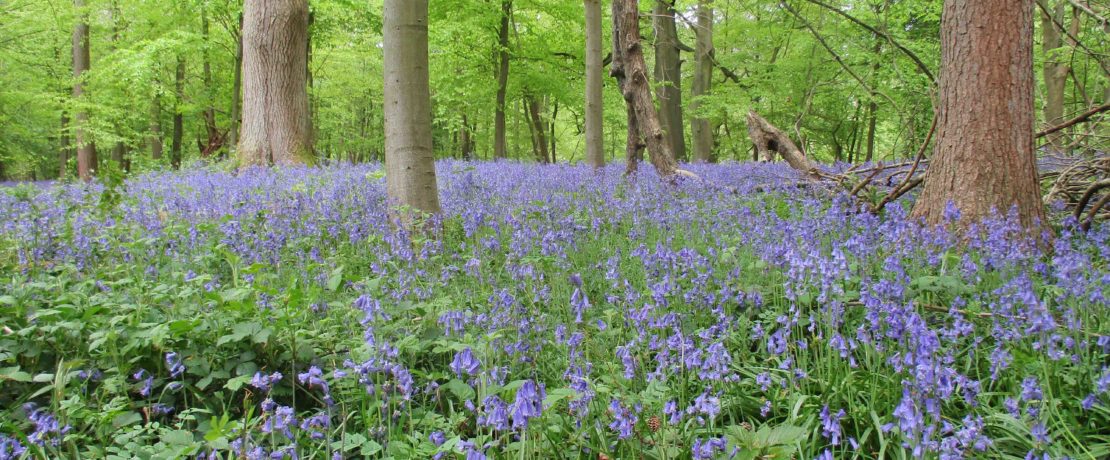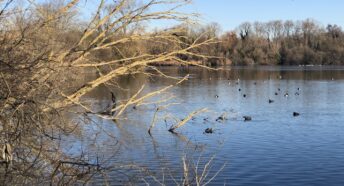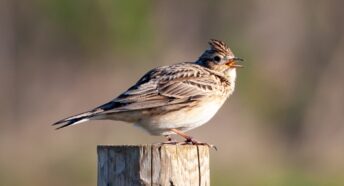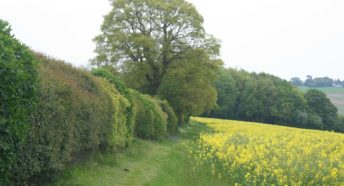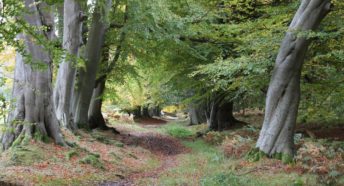Discovering Hertfordshire’s wonderful bluebells
Our bluebell woods are one of the wonders of the countryside. Flourishing in the mild, damp climate, bluebells are more widespread and numerous in Britain than anywhere else.
In fact, according to the Chilterns National Landscape almost half the world’s bluebells are found right here in the UK.
In Hertfordshire bluebell woods are found throughout the county, although the flower seems to prefer acid soils (gardeners will know that such soils support species like rhododendron) especially on clay. In the most admired bluebell woods the ‘sea’ of blue can completely cover the ground; the sweet perfume of the flowers is also intense. They are at their best in late April and early May, when the leaves of the tree canopy are just emerging.
Bluebells are mainly found in ancient woodland
Bluebells grow mainly in ‘ancient’ woodland: sites which have been wooded since at least 1600. Some of these may have a direct link back to the original wildwood. In Hertfordshire very early field systems have been found under some ancient woodland, as at Wormley Wood near Broxbourne. Due to their history ancient woodland areas are valued wildlife habitats, sheltering a diverse mix of species which is irreplaceable. During the 20th century many ancient woodlands were replanted with conifers, which cast heavy shade and reduce species diversity.
Coppicing, once widespread in British woods, exploits a tree’s ability to regenerate after felling. Species like hazel, ash, oak and hornbeam were cut regularly to produce wood for tools, fencing, fuel and house-building. The cycle could be as short as seven years to yield hazel spars for thatching, and up to 15 years for large hornbeam logs for fuel. Immediately after coppicing woodland flowers thrived in the extra light, then were able to survive the darker periods. At the end of the 20th century only a few of Hertfordshire’s woods were still actively coppiced. As the value of coppicing for wildlife has been recognised a few once-neglected woods are being managed in this way again. The mosaic of different growth stages in a regularly coppiced wood, where compartments are cut in rotation, benefit species like dormouse, nightingale and butterflies.
The botanist E J Salisbury was fascinated by the tendency for single plant species to dominate large areas of woodland. His studies of woodland flora in Hertfordshire’s woods, published in the early years of the 20th Century, became classics of the new science of ecology. In some woods plants other than bluebells carpet the ground in spring. At Hoddesdonpark Wood to the south of Hertford Heath, the starry white flowers of wood anemones are a spectacle during April.
Woods owned by local authorities and conservation bodies are often open to the public. Many woods are privately owned but accessible wherever you see public rights of way shown running through them on maps or signposted from a road.
Bluebell leaves and flowers are very sensitive to trampling, so please stay on paths and tracks through woods where they are growing. Always leave wild flowers for others to enjoy.
A brief history of Hertfordshire’s woodland
Early dates are very approximate
10,000 to 6,500 years ago
‘Wildwood’ developed as temperate conditions returned after the ice left Britain. On dry thin soils over chalk, woodland may always have been sparse.
6,500 years ago
Man began to clear woodland to farm. Pollen preserved in wet places and buried snail shells provide evidence that woodland species were being replaced by those preferring a treeless environment. By 4,000 years ago extensive areas of woodland had been cleared; some remaining were possibly already managed by coppicing.
2,000 years ago
The Romans probably found a landscape of scattered farms, with woodland remaining on heavier, more difficult-to-plough soils, including clay-covered higher land.
1086
Information in the Domesday Book suggests that 30% of Hertfordshire was wooded, with very little in the northern parishes. Much of the remaining woodland was probably protected from grazing by banks and coppiced regularly.
2024
Woodland covers about 16,000 hectares (just under 40,000 acres) or 10% of Hertfordshire’s land area. The area has increased in the last 50 years due to new planting. Around 4% of Hertfordshire is covered by ancient woodland. The county lost 44% of its ancient semi-natural (woodland which has not been substantially replanted) in the 20th century.
The biggest threat to the survival of woodland biodiversity nationally and in Hertfordshire is the lack of beneficial woodland management. The Herts and Middlesex Wildlife Trust’s ‘State of Nature Report 2020’ explains that introduced tree diseases, increased browsing pressure by deer, human recreational disturbance, changes to management practices and neglect are all causing specialist woodland wildlife to decline.
Some bluebell woods to visit
Langley Wood and Round Wood. Woods within the Woodland Trust’s Heartwood Forest. Access off the B651 between Sandridge and Wheathampstead. Grid References TL162109 and TL162121. Download our self-guided walk at Heartwood.
Harrocks Wood and Whippendell Wood to the west of Watford. Access from Grove Mill Lane. Grid Reference TQ081983. Download our self-guided walk at Harrocks Wood and Whippendell Wood.
Gobions Wood between Brookmans Park and Potters Bar. Access from Mymms Drive. Grid Reference TL249040. Please park carefully with consideration for residents. See the Herts and Middlesex Wildlife Trust leaflet for more information.
Astonbury Wood, Aston, near Stevenage. Grid reference TL276212. There is no parking provision but the wood can be accessed via the local footpath network. See the Herts and Middlesex Wildlife Trust website for more information, or download our self-guided walk.
Reynold’s Wood near St Paul’s Walden. Accessed along a public footpath from the B651. Grid Reference TL197219.
And to see the wood anemones in Hoddesdonpark Wood, access is from Hoddesdon or car parks at Grid Reference TL347087 and TL347077.
When visiting: ‘Leave nothing but footprints, take nothing but photographs‘.
Love bluebells?
Why not purchase our gorgeous blank greetings cards showing a carpet of bluebells in Reynold’s Wood – perfect for every occasion. Profit from each pack of cards helps fund our work to promote and protect the wonderful Hertfordshire countryside, for everyone to value and enjoy.
